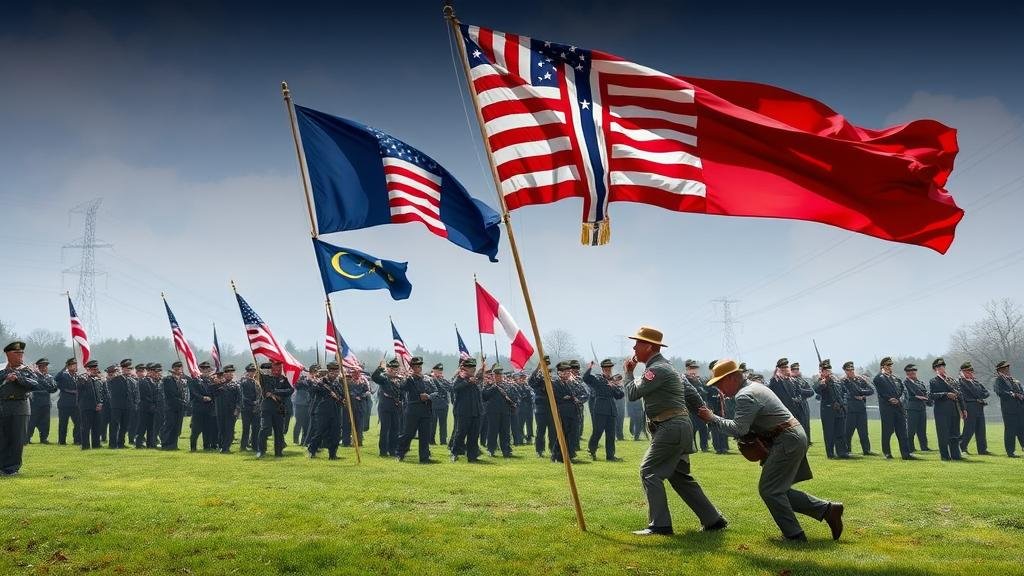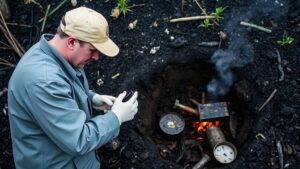Recovering Historic Battle Flags and Medals of Valor in Skirmish Areas
Recovering Historic Battle Flags and Medals of Valor in Skirmish Areas
Historic battle flags and medals of valor serve as poignant reminders of military conflicts and the sacrifices made by soldiers throughout history. The recovery of these artifacts in skirmish areas not only preserves history but also illuminates personal stories linked to significant events. This article explores the techniques and methodologies involved in recovering these items, their historical significance, and the challenges faced in such endeavors.
The Importance of Historic Artifacts
Battle flags and medals are not mere relics; they represent the valor, pride, and allegiance of military units. For example, the recovery of a Confederate battle flag from a skirmish site could provide insights into the logistics of troop movements during the Civil War. In 1863, the 3rd Georgia Infantrys battle flag was pivotal in numerous engagements. Finding such a flag can help historians better understand the units journey and the battlefields strategic significance.
Methodologies for Recovery
- Geophysical Surveys: Before any excavation, experts often use modern techniques such as ground-penetrating radar (GPR) and electromagnetic surveys to identify potential sites. In 2018, GPR was used successfully at the Battle of Gettysburg site, yielding valuable data that guided excavations and pinpointed possible artifact locations.
- Archaeological Excavation: Once promising sites are selected, archaeologists employ stratigraphic excavation methods to carefully remove layers of soil, minimizing damage to the artifacts. Excavations at historical sites often adhere to strict protocols to ensure that items are recovered in their contextual relationship to the surrounding soil.
- Metal Detection: Metal detectors play an essential role in locating medals or metallic components of flags. When the 2nd Infantry Regiments medals were recovered in South Carolina, metal detection significantly expedited the process, highlighting the importance of technology in modern archaeology.
Challenges in Recovery Operations
The recovery of historic battle flags and medals is fraught with challenges, including environmental conditions, legal considerations, and ethical dilemmas. Fluctuating soil conditions, as seen in locations like Antietam National Battlefield, can obscure artifacts and complicate excavations. The interaction between moisture and soil composition can lead to corrosion, making artifacts more fragile. Also, the legal framework governing the excavation of historic sites is crucial. Archaeological Resources Protection Act (ARPA) of 1979 safeguards archaeological sites, imposing penalties on unauthorized excavations. Ensuring compliance with these laws is paramount to the integrity of recovery efforts.
Ethically, the recovery of items from skirmish areas raises questions about ownership, preservation, and display. The legal ownership of artifacts can become contentious, particularly when museums and private collectors are involved. In 2004, the recovery of a medal of valor belonging to a fallen soldier led to debates over its rightful ownership between the family and a local historical society. Such situations highlight the complexities of preserving history while respecting personal legacies.
Case Study: The Recovery of the 54th Massachusetts Infantry Flag
The 54th Massachusetts Infantry, known for its courageous assault on Fort Wagner in 1863, left behind a legacy marked by its battle flag. In 2005, efforts to recover remnants of this flag from the site highlighted the intersection of community involvement and historical preservation. Local historians partnered with state archaeologists to lead community outreach initiatives, fostering a collective awareness of the flags importance. Excavations revealed portions of the flag, prompting restoration efforts that culminated in display at the Massachusetts State House.
Conclusion and Actionable Takeaways
The recovery of historic battle flags and medals of valor serves not only as a means of preserving history but also as a way to educate future generations about the sacrifices made by soldiers. Preservation efforts require careful planning, adherence to legal protocols, and responsiveness to ethical considerations. Communities can take the following steps to promote recovery efforts:
- Organize community archaeology days with local historical societies to involve the public.
- Engage in educational programs that highlight the significance of local military history.
- Promote awareness of legal frameworks that protect archaeological sites to foster respect for preservation efforts.
These initiatives not only bolster local history but also ensure that the legacies of those who fought are honored and remembered, reinforcing the critical role of historic artifacts in our collective narrative.



